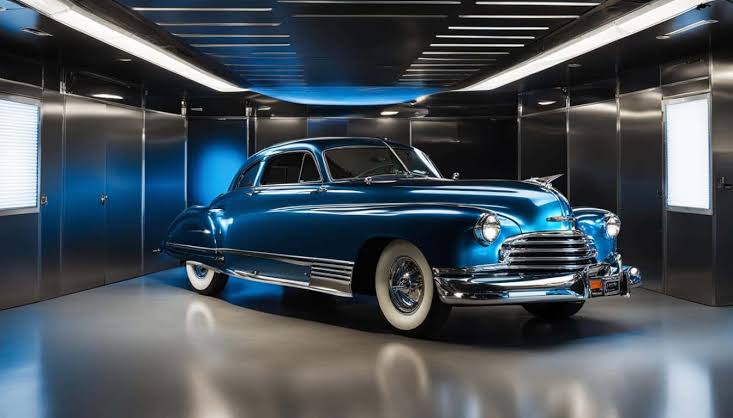It’s midnight, and the air smells like smoke and adrenaline. A riot has erupted downtown—store windows shattered, fires casting jagged shadows, voices screaming in anger and fear. Amid the chaos, a team of armed security guards moves like a single organism. They don’t bark orders or wave weapons. Instead, they form a living barrier between a looted pharmacy and a group of teenagers filming the chaos on their phones. One guard peels away to help an elderly man who’s fallen near a burning dumpster. Another radios medics to a protester hyperventilating on the pavement. This isn’t just a job. It’s a ballet of discipline, rehearsed in countless drills, where every step is calculated to save lives, not take them.
In a world where riots, hurricanes, and mass emergencies test the limits of order, armed security guards have become the quiet backbone of crisis response. Their training isn’t about firepower—it’s about control. Here’s how their unseen work keeps communities from unraveling.
Training: Where Instinct Meets Ethics
The best security guards aren’t defined by their holsters. They’re defined by their ability to think under fire. Training programs drill scenarios so real, guards can taste the smoke:
Riot Tactics: Calm Wins
During protests, guards aren’t taught to “hold the line” like soldiers. They learn to shape it. Picture this: Outside a city hall clash, guards use mirrored sunglasses and deliberate silence to unnerve agitators. They’ve practiced this “quiet wall” tactic for months—no shouting, no batons. Just stillness. “Anger needs an audience,” one guard explains. “We don’t give it one.”
Disaster Logic: Brains Over Brawn
When a hurricane floods a neighborhood, guards aren’t just muscle. They’re navigators. They memorize sewer maps to avoid electrocution in standing water. They practice triage by flashlight, tagging injuries with glow sticks: red for critical, green for walkaways. After a tornado leveled a trailer park, guards used wind patterns to predict where survivors might be trapped—a trick learned from storm-chaser consultants.
De-Escalation: The Power of Pause
The most vital tool isn’t a gun. It’s the ability to make someone feel seen. Guards train with actors playing everything from suicidal veterans to strung-out thieves. In one exercise, a guard defused a mock hostage situation by asking about the “gunman’s” favorite childhood TV show. “People don’t want to hurt others,” the instructor says. “They want to stop hurting themselves.”
Discipline: The Art of Not Pulling the Trigger
Training builds skill. Discipline builds character. Seasoned guards live by unspoken rules:
- Restraint as Strength: When a brick flew through a guard’s patrol car window during a riot, he radioed for backup but never upholstered his weapon. “My job isn’t to escalate,” he said later. “It’s to outlast.”
- Eyes Everywhere: Guards scan for hidden threats—a gas leak near a protest’s edge, a trembling hand in a crowd. After a bomb threat at a concert, a guard spotted a misplaced backpack not by the bag itself, but because the crowd instinctively avoided it.
- Accountability: Every action is filmed, every decision logged. Guards review footage like athletes study game tape. “That time I hesitated? Never again,” one admits.
This discipline saved lives during a citywide blackout. While looters ransacked dark stores, guards switched to night vision goggles and herded crowds with glow-in-the-dark batons. Not a single shot fired.
The Unsung Architects: Raising the Bar
Behind every guard is a network of mentors, drill sergeants, and policy wonks who turn raw recruits into crisis pros. These unseen forces:
- Invent New Tools: Think drones that drop first-aid kits into riot zones or earpieces that translate screams into actionable intel.
- Mandate Empathy Drills: Guards role-play as homeless veterans, terrified parents, even cornered thieves to understand the minds they’ll face.
- Build Community Bridges: Some firms partner with schools, training guards to mentor at-risk teens—a tactic that’s slashed vandalism in some neighborhoods by half.
When a wildfire trapped a rural town, guards arrived with satellite phones and wildfire shelters—gear stockpiled during off-season drills. They turned a Costco parking lot into a rescue hub, coordinating evacuations long before official aid arrived.
The Ripple Effect: Quiet Wins, Loud Impact
The payoff of this work isn’t just in headlines. It’s in the unspoken:
- Businesses Survive: A guarded strip mall hit by riots reopened in days, not months. The bakery owner sent guards free croissants for a year.
- Trust Grows: After security guards helped a homeless camp relocate instead of razing it, locals started tipping them off about trouble.
- Crime Shifts: Thieves hit softer targets. “They want easy,” a guard shrugs. “We’re not easy.”
The Human Cost—and Triumph
This work leaves scars. Guards talk about the sleep lost, the faces they can’t forget. But also the moments that redeem:
- The time a guard carried a diabetic teen through a flooded street to her insulin.
- The night a team turned a parking garage into a blizzard sanctuary, brewing coffee on a camp stove for stranded drivers.
- The protest where guards shielded both cops and protesters from sniper fire—neutral ground in a divided world.
The Takeaway: Guardians, Not Warriors
Armed security isn’t about dominance. It’s about presence. It’s the guard who stands so still, a riot forgets to rage. The one who trades his last bottle of water with a stranded mom. The team that turns a disaster zone into a place of order, not with threats, but with quiet competence.
In the end, their greatest skill isn’t stopping bullets. It’s reminding us that even in chaos, humanity can hold the line.
And sometimes, the bravest thing they do is walk away.






